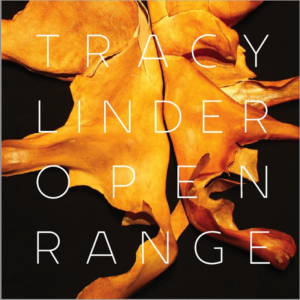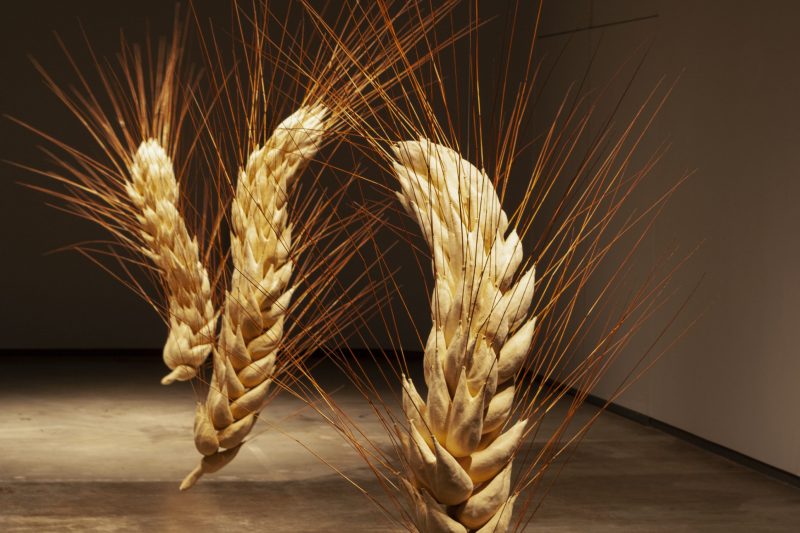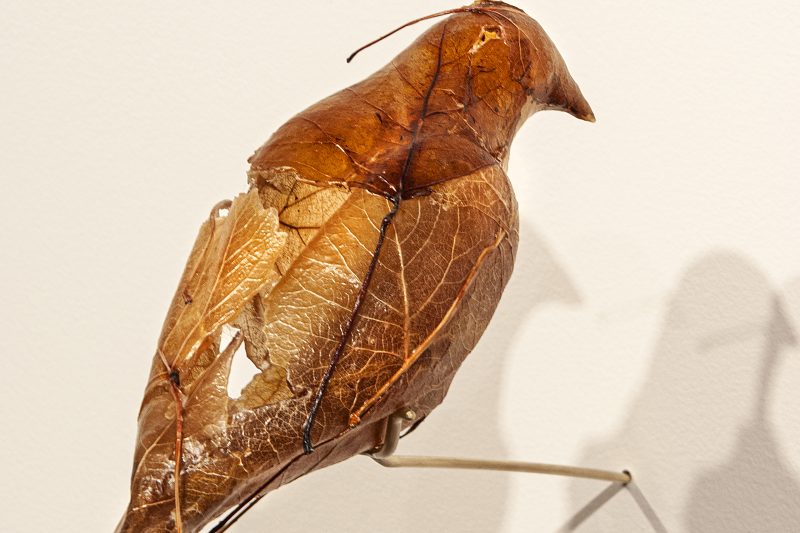Montana sculptor Tracy Linder investigates the connections between humans, animals, plants, and machines in “Open Range,” on display through Jan. 12 at the Yellowstone Art Museum. The artist’s first major mid-career retrospective was curated by Susan Barnett, and the accompanying catalog features essays by art critic Lucy R. Lippard.

“Linder’s sculptures are the color of the high plains in early fall: gold, brown, tan, and white,” writes Barnett. “Made from bones, seeds, leather, fur, branches, bronze, resin and time, her sculptures represent and incorporate cycles of growth, death, and rebirth.”
Linder’s sculptures and installations investigate the connections between humans, animals, plants and machines, highlighting the struggles and husbandry involved in working the land. Using a wide array of materials, she represents the vulnerabilities, strength, joy, heartache, struggle, cycles, and resilience of life.
The themes are a natural lens for Linder who grew up on a family farm and now lives on the vast windswept prairie of south central Montana, near Molt.
Working in series, her works embody work: gloves shaped by laboring hands, leather stitched around tree limbs, plant seeds bonded to animal bones, pods shaped from skin and fur. Linder’s art makes visible her nuanced understanding of the complex and fragile relationship between people and their food sources.
“I am surrounded by the harsh realities of storms that can wipe out a year’s crop in minutes, by ranchers braving the blustery cold to rescue a newborn calf from certain death, by a community that will drop everything to help extinguish a fire, and a sense of isolation that can be both comforting and profoundly lonely,” she writes. “These experiences are my lifeblood.”
She seeks, through her sculpture, to invite “an empathetic glance into today’s food chain.” Materials include animal collagen, leather, beeswax, resin and bronze.
“I pride myself on craftsmanship with deeply thought-out and well developed subject matter, form and scale,” writes the artist. “It is slow work. I invite contemplation.”
Linder’s work has been exhibited nationally and internationally and is in numerous public and private collections. She was the first artist in residence to work in the YAM’s Visible Vault in 2010.
She was interviewed by Ann Landi for an article in the November/December 2020 issue of Sculpture Magazine, titled “The Roots of Sustenance.”

